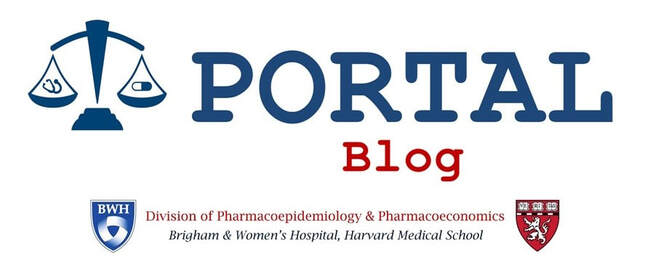Challenging Patents To Promote Timely Generic Drug Entry: The Second Look Act And Other Options8/31/2020
Liam Bendicksen, Jonathan J. Darrow, and Aaron S. Kesselheim This article was originally published on the Health Affairs Blog. Tackling prescription drug costs remains a top priority for voters. Drug spending in the US is driven both by increasing overall prescription volumes and by high prices for brand-name drugs, which are set freely by manufacturers during patent-protected exclusivity periods that last about 13.5 years after drug approval, on average. One important means of addressing the price component of rising expenditures is to facilitate the market entry of generic drugs after exclusivity periods for brand-name drugs last a reasonable amount of time, since the availability of substitutable generics often leads to rapid and substantial reductions in payer drug spending and patient cost sharing. The latest proposal to encourage timely generic entry is a bill in Congress intended to help efficiently screen out improperly issued drug patents. The Problem: Delays In Generic Entry Caused By Improperly Issued Brand-Name Drug Patents Improperly issued drug patents can and do delay the entry of generic drugs. Indeed, a key strategy of brand-name pharmaceutical manufacturers is to obtain patents not just for active ingredients, but also for peripheral features such as a drug’s coating, formulation, or delivery mechanism. In a previous study, we showed that two highly profitable active ingredients were covered by scores of patents. In some cases, these patents may be obtained after FDA approval of the original drug product (though usually based on patent applications filed prior to drug approval) and extend many years in the future at the time the patent on the active ingredient expires and generics are ready to enter the market. As a result, manufacturers of generics frequently must challenge brand-name drug patents in court to sell their products in the US. To address such improperly issued patents, the 1984 Hatch-Waxman Act created a framework that encouraged manufacturers of generic drugs to challenge brand-name patents in court. In the 1990s and 2000s, generic manufacturers prevailed in challenges of method-of-use and formulation patents between 33 percent and 71 percent of the time. But even an ultimately successful court challenge can entail a protracted legal battle that can delay timely entry of a generic, or even deter entry entirely. Moreover, the Hatch-Waxman Act provides that when patents are listed in the FDA’s “Approved Drug Products with Therapeutic Equivalence Evaluations” (commonly known as the “Orange Book”), a lawsuit initiated within 45 days by a brand-name manufacturer triggers a 30-month stay of FDA approval of the generic product, delaying generic market entry by two-and-a-half years or until the litigation resolves, whichever occurs sooner. The Second Look Act The Second Look at Drug Patents Act of 2020 (The Act), cosponsored by Sens. Patty Murray (D-WA) and John Cornyn (R-TX), would increase awareness of a quicker, more efficient way to challenge brand-name patents, without costly litigation and before they are listed in the Orange Book: inter partes review, an administrative process that Congress created in 2011 as part of the Leahy-Smith America Invents Act that allows the United States Patent and Trademark Office (USPTO) to reevaluate its initial decision to grant a patent. The Second Look Act would amend the Food, Drug, and Cosmetic Act to require sponsors of new drugs to notify the USPTO after submitting patent information to the US Food and Drug Administration (FDA). The USPTO would be required to provide notice of these patents on a new website it would create and maintain and in the USPTO’s Official Gazette, a weekly publication. These notices would help alert interested parties that they could file a petition for inter partes review. Inter partes review can reduce the need to litigate the validity of drug patents in federal court. Compared to litigation, inter partes review has several advantages. Most importantly, it is generally cheaper, quicker, and more efficient than court-adjudicated lawsuits. The Patent Trial and Appeal Board (PTAB), which adjudicates inter partes reviews, is an expert body with more than 200 Administrative Patent Judges that collectively have greater expertise across a wide range of scientific and patent law issues than do most federal district courts. The PTAB uses the evidentiary standard of a “preponderance of the evidence” to determine if a patent is invalid, while courts apply the higher threshold of “clear and convincing evidence” to invalidate a patent, making it easier for a patent challenger to prevail before the PTAB. Any person may initiate an inter partes review at any time, potentially long before a generic drug application is filed. Prior questions about the constitutionality of inter partes review have been resolved, and the process now appears to be on solid legal ground. Of course, inter partes review does not guarantee invalidation of drug patents since, as with court litigation, patents will remain intact if they were validly granted. For example, only 3 percent of active ingredient patents challenged in Hatch-Waxman Act litigation were found invalid or not infringed. But early evidence suggests that inter partes reviews conducted by the PTAB are an effective way to address improperly granted patents, including drug patents. From September 2012 to November 2018, final written decisions issued by the PTAB invalidated 46 percent of claims in Orange Book-listed patents (patents often have multiple “claims” that define the scope of exclusionary rights). The Need For Additional Action While increasing awareness of inter partes review is important, it is crucial to recognize that the Second Look bill does not alter the existing inter partes review process for challenging patents in any way. Furthermore, the patent information provided by the Second Look Act is already in the public domain. Since 1984, federal law has required that drug patent information be provided to the FDA at the time of new drug application submission, and then listed in the Orange Book, which is freely available online. The USPTO already publishes information about new patents in its Official Gazette. Thus, while the Second Look Act might be helpful, more could be done to help generic drugs come to market. For example, patent law currently provides that “a patent shall be presumed valid,” placing the burden on the litigant challenging the patent to prove invalidity by clear and convincing evidence. Rep. Hakeem Jeffries (D-NY) and Rep. Doug Collins (R-GA) have proposed shifting this burden of proof to the brand-name manufacturer. Other policy alternatives include restricting the types of patents that may be listed in the Orange Book. For example, researchers have proposed that policymakers restrict Orange Book listings to a single patent per drug, or to only those patents covering the active ingredient of a drug. Lawmakers could also prohibit late-listed patents, i.e., patents not submitted to the FDA until after the filing a new drug application, unless a patent covers changes that confer additional clinical benefits. However, the listing of patents in the Orange Book was intended to increase transparency and facilitate the filing of patent challenges by generic drug companies, so listing only some patents would frustrate this goal. A better option would be to continue to require that most patents be listed in the Orange Book, but reduce the 30-month stay to a shorter period, such as 18 months. Lawmakers could also limit the stay to a narrower set of patents or eliminate the stay entirely, though this could lead to delayed litigation (and thus delayed generic entry) by removing the incentive for brand-name manufacturers to bring patent challenges within 45 days. Publishing drug patent information in the Official Gazette and a new USPTO website may elevate the visibility of both new drug patents and the inter partes review process, and could encourage generic manufacturers and other interested parties to challenge those patents. But its potential impact, even if enacted, is likely to be limited. Historically, approximately 91 percent of Orange Book-listed patents challenged in inter partes review have also been challenged in court, and 95 percent of Orange Book inter partes review petitions were filed after court litigation began. These figures suggest generic manufacturers are seeking the more challenger-favorable evidentiary standards and other benefits of inter partes review to help clear a path to market entry, but may be less willing to forego the 180-day exclusivity available to first generic patent challengers under the Hatch-Waxman Act (which inter partes review does not provide). While the Second Look Act is a step in the right direction, other ways that lawmakers can address the issue of invalid drug patents delaying generic entry will likely go further towards ensuring a proper balance between drug innovation and access. Michael S. Sinha
Antimicrobial resistance is a very real public health concern, but existing incentives have largely failed to stimulate a robust pipeline of antibiotic development. There are two major types of incentives. "Push incentives" come in the form of early funding of research and development that helps "push" a drug through trials and toward approval. In contrast, "pull incentives" come in the form of lucrative awards for successful drug approvals, intended to "pull" manufacturers toward targeted research and development. Most recently-proposed legislative incentives for antibiotic development largely fall into the latter category. The 21st Century Cures Act's Limited Population Pathway reduced the evidentiary threshold for antibiotic approval. The GAIN Act's Qualified Infectious Disease Product (QIDP) designation doubles the length of Hatch-Waxman exclusivity for qualifying antibiotics (from 5 to 10 years). Another program offers priority review vouchers (PRVs) for drugs to treat tropical diseases, which can be redeemed to expedite FDA review of future drug applications. Finally, wildcard vouchers have been proposed to extend patent exclusivity of marketed drugs in exchange for successful approval of a new antibiotic. A new article by PORTAL researchers in The Journal of Infectious Diseases reviews the latest pull incentives for developing novel antibiotics, which increase reimbursement by the Centers for Medicare and Medicaid Services for inpatient use of new antibiotics. We argue that such financial incentives will—like the other pull incentives described above—continue to favor new antibiotics with limited additional value over existing therapies. We instead recommend incentives that promote the development of better therapies that advance the care of patients with resistant infections. Rachel E. Barenie
Medication nonadherence occurs when patients do not take their medications as prescribed and can be due to numerous factors, such as side effects and high drug costs. Ultimately, nonadherence is tied to poorer patient outcomes and billions of dollars in healthcare spending annually. One possible contributor to nonadherence is the lack of consistency in the appearance of a patient’s medication. In this new study, PORTAL researchers collaborated with the US Food and Drug Administration to better understand patients’ and pharmacists’ preference for and experiences with changes in pill appearance. These included changes in the size, shape, color, and markings of medications. We conducted two independent surveys of practicing pharmacists and patients between January and April of 2016. Patients were 50 years or older and taking medications for one of six chronic diseases. We probed more about how often these changes were occurring, what their (both patients and pharmacists) responses to the changes were, and others. The study found that most patients reported experiencing a change in their pill’s appearance and preferred to be notified about those changes. Fewer than half the patients participating in the survey, however, reported being notified either verbally or with a sticker on their prescription bottle about the change. Of patients who reported a change, 12% reported they either stopped taking or used their medication less frequently because of the change. We found that most pharmacists reported that these changes occurred frequently in their pharmacies and most reported notifying patients when a change occurred. Jonathan J. Darrow and Jing Luo
This blog post originally appeared on the Blog of the Journal of Medical Ethics and can be found here. As government leaders move to relax physical distancing requirements related to severe acute respiratory coronavirus 2 (SARS-CoV-2), a central assumption is that mechanical ventilators will form part of the safety net needed to sustain life in those afflicted with the disease it causes, Covid-19. Ventilators have been described as “crucial” and “essential” “lifesaving devices” that are “desperately needed.” In March, Mayor Bill de Blasio memorably warned that if New York City didn’t get more ventilators “people will die.” By Executive Order, President Trump invoked the Defense Production Act, authorizing the government to compel private industry to produce more of them—at least 30,000 from General Motors alone, at $16,313 each. Overlooked in most news reports was the extent to which ventilators might actually benefit patients with Covid-19. Ventilator Effectiveness Outcomes can vary according to medical circumstances, but historical data provide some insight. The most comprehensive evaluation of prolonged (generally >14 days) mechanical ventilation is a 2015 meta-analysis of 124 observational studies, which found that 57% of patients suffering from various conditions were liberated from mechanical ventilation and 38% were alive at 1 year. Limited evidence is available in patients with coronavirus: in the largest case series in the US, approximately 20% of 5700 hospitalized patients with confirmed SARS-CoV-2 receiving care in NY-area hospitals required mechanical ventilation. Of the 320 patients with an out-of-hospital disposition by study completion, a staggering 88% of those receiving mechanical ventilation died. These preliminary figures could change since 831 patients remained hospitalized and on ventilation when these results were published, but available data suggest that the overall prognosis for patients with Covid-19 who require mechanical ventilation is poor. Even for those who survive, life may not return to normal. The 2015 meta-analysis found that only 19% of all patients were discharged to home (rather than to another facility), and a separate Duke University study of 126 patients reported that only 9% were independent of major functional status limitations at 1 year. A 2019 study of 315 patients receiving prolonged mechanical ventilation at a Chicago-area hospital found that, at 1 year, 60 (19%) could bathe independently, 75 (24%) could dress independently, and 61 (19%) could toilet independently. Expectations of Outcomes by Physicians and Family Members Consistent with the evidence-free discussion of ventilator value, patients and family members have been shown to substantially overestimate the clinical benefits of mechanical ventilation. In a 2009 Duke University study, almost all (93%) family members expected the patient to survive at 1 year, and most (71%) expected high functional status at that time. These inaccurate expectations about prognosis could be the result of the unique circumstances of each patient, such as age and baseline health status, and associated variability in expected outcomes. But the available data offer another possibility: In contrast to family members, fewer than half (43%) of physicians expected patients to be alive at 1 year and almost none (6%) expected them to have high functional status at that time. These data suggest that poor communication may be contributing to inaccurate perceptions of ventilator benefit. The Importance of Disclosure It can be uncomfortable to communicate poor prognoses to patients, and physicians and government officials may prefer to emphasize hope, particularly when there is genuine uncertainty. But ethical ideals of patient autonomy cannot be achieved without disclosing treatment alternatives and their expected benefits and risks, based on the best available evidence. Disclosure is also necessary to enable government officials to make appropriate decisions and benefit from public support when doing so. For example, if ventilator benefit/risk ratios are overestimated, physicians could be pressured to continue a patient on ventilation even when clearly futile, and government officials might under-invest in prevention efforts or, in the longer term, in the development of new drugs or vaccines. Patients and government officials may overestimate benefit in part because the use of mechanical ventilators is supported by a compelling mechanistic rationale: patients need oxygen, and ventilators help patients breathe. But real-world complexities mean simplistic rationales do not always accurately predict outcomes. In some patients with Covid-19, the use of ventilators with higher pressures could actually cause harm, such as by causing over-expansion of alveoli in unaffected regions of the lungs. Ventilator associated pneumonia is also a risk. The issue of effectiveness is not unique to ventilators, and overestimations (or underestimations) of the benefits of drugs, vaccines, social distancing, and other measures could similarly lead to incorrect priorities and misallocation of resources while leaving family members unprepared for what is to come. Although it is desirable for policymakers to actively work to avoid shortages of ventilators or other resources before they occur, the greater the reluctance to engage with the evidence, the less likely important decisions will be evidence-based, leaving officials and health care workers—and ultimately patients—vulnerable to the potential influence of public emotion. Acknowledgment: The authors thank Peter Doshi, PhD, Stephen Darrow, JD, MS, and William Feldman, MD, DPhil for helpful comments. Beatrice Brown, Neeraj Patel  Each month, we review the peer-reviewed medical literature to identify interesting empirical studies, policy analyses, and editorials on health law and policy issues at the intersection of regulation, therapeutics, and law. To see the literature scan for August 2020, visit our literature scan page. To receive these literature scans each month to your email, you can subscribe to our mailing list here. Richard G. Frank, Jerry Avorn, Aaron S. Kesselheim Editorial Note: Prescription drug spending in the United States continues to increase. A new report from IQVIA titled "Medicine Spending and Affordability in the U.S.: Understanding Patients’ Costs for Medicines" was published earlier this week, providing an updated snapshot of just how high drug costs can be for various stakeholders, including patients. One key finding was that “a record $67 billion was paid out-of-pocket by patients for all prescriptions filled in retail pharmacies in 2019, up from $61 billion in 2015.” The report also notes that patients with higher out-of-pocket costs more frequently abandon their new prescriptions. What do high drug prices buy us, anyway? In April, PORTAL researchers co-authored a Health Affairs blog post which seeks to answer that question. US patients pay far more for the same brand-name drugs than do patients in other affluent countries; these prices are often well out of proportion to the clinical benefits they offer. Recent legislation passed by the House of Representatives would give the federal government the authority to negotiate prices on a modest number of costly brand-name medications, based on factors such as the drug’s effectiveness, the adequacy of alternative treatments, and market size. The Congressional Budget Office has estimated that such negotiation would reduce taxpayer spending on prescription drugs by about $456 billion over 10 years. The pharmaceutical industry has strongly opposed these proposals, making its common objection that they would diminish the incentive to innovate and thereby deprive Americans and the world of access to new cures. The industry’s argument can be summarized as follows: Government should not be involved in limiting what taxpayers and consumers pay for drugs because doing so would lead to less innovation, which would lead to fewer new drugs, which would ultimately put the health of the public at risk. In effect, the industry is administering its own national innovation premium, arguing for its necessity to promote the health of the public. But, having paid that premium for decades now, what do we actually get for it? What do high drug prices buy us? Answering these questions can help provide a more evidence-based assessment of the effects of thinking about the problem in this way. Other Nations Assess the Likely Clinical Impact of Drugs We evaluated all 46 new drugs approved in the United States during the year 2017. Specifically, we considered them in light of the appraisals of their likely clinical impacts conducted by three national health technology assessment agencies outside the US: those in Canada, Germany, and France. The US has no government-funded organization with a mandate or resources to make such assessments for use by patients and their physicians. But a number of industrialized nations systematically assess the therapeutic benefit likely to result from each new medication proposed for inclusion in their health care systems, as part of their standard drug approval and reimbursement processes. These assessments are performed by independent groups of scientists and clinicians based on clinical trials, observational outcome data, consideration of drugs already on the market to treat the same conditions, and the experiences of other nations with a given product. The determinations are made without regard to the drugs’ costs; they are simply an assessment of their benefit to patients, compared to available treatments. Each of the countries whose assessments we used take a slightly different approach: The Canadian Patented Medicine Prices Review Board classifies the incremental benefit of each new drug as conferring one of five levels of improvement: “breakthrough,” “substantial,” “moderate,” “little,” or “no” improvement. In France, the Transparency Committee of the government’s National Authority for Health routinely assesses the medical benefit of recently approved drugs on a four-point scale: “none,” “minor,” “moderate,” or “important.” In Germany, the Institute for Quality and Efficiency in Health Care is an independent nonprofit institute that evaluates the comparative effectiveness of medical interventions. It produces a report that informs the government’s assessment of whether a new drug offers patients “major added benefit,” “considerable added benefit,” “minor added benefit,” “nonquantifiable added benefit” (a category used if, for example, the underlying evidence appears biased or decision uncertainty is high), “no evidence of added benefit,” or less benefit than the appropriate currently available comparator(s). Forty-Six New Drugs For all 46 new molecular entities (NMEs) approved by the Food and Drug Administration in 2017, we reviewed the assessments of each made by these national health care technology assessment bodies (see exhibit 1).
Of the 17 new drugs expected to offer few if any additional benefits to patients above what was available with existing treatments, many are extremely costly. More than two out of every five new medications have not yet been evaluated by any of these three national assessment programs. That could be because the drug has not been approved by the European Medicines Agency or, for drugs such as deflazacort, have been available outside the US for many years. Many of the new products that were assessed (such as glecaprevir-pibrentasvir for vital hepatitis infection, or semaglutide for type 2 diabetes) are highly effective but represent second- or third-in-class products that offer little clinical benefit over their predecessors in the class. It is reasonable to offer some incentives for such products, to offer options for patients who cannot tolerate the first-line product, or to encourage competition, even though price competition among comparable brand-name products in the US has historically been quite limited. Together, this information raises the question of how effectively the existing “innovation premium” imposed by the pharmaceutical industry is yielding gains for patients or the public’s health. Furthermore, if the government negotiated for prices based on a drug’s real advantage over existing products, it could provide a better incentive for more useful innovation as well as improve the affordability of prescription drugs. Would such a policy lead to the development of more drugs that truly advance patients’ health, as well as address the growing problem of the affordability of new medications? To fairly answer these questions, it is time to think about what the US innovation premium buys. Exhibit 1: Drugs approved in the US in 2017 and the outcomes of their clinical reviews in Germany, France, and Canada Source: Authors’ compilation from corresponding agencies. Notes: * Determinations different for indicated population subgroups for brodalumab (for patients with inadequate response to systemic therapy or contraindicated/intolerant to it, in light of the “assumptions were made for both approaches in order to take into account the very high proportion of values to be replaced”) and emicizumab (for patients with bypassing agent “due to uncertainties regarding the appropriateness of the treatment regimens used”). All assessments are for indications at the time of European approval/market entry. |
AuthorPORTAL Blog posts are authored by PORTAL faculty, trainees, and collaborators. Archives
January 2022
Categories |
|
Program On Regulation, Therapeutics And Law (PORTAL)
Division of Pharmacoepidemiology and Pharmacoeconomics 1620 Tremont Street, Suite 3030 Boston, MA 02120 |












 RSS Feed
RSS Feed
